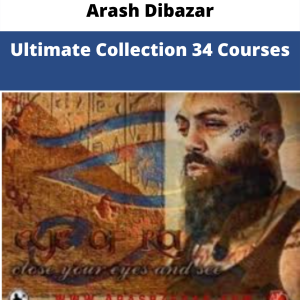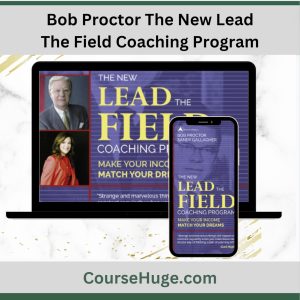Min Liu – Master Of Metaphor
$199.00 Original price was: $199.00.$32.00Current price is: $32.00.
Min Liu Master of Metaphor Course [Instant Download]

What is Min Liu Master of Metaphor?
Master of Metaphor is a practical course that teaches you how to create powerful metaphors that make your communication more effective.
Created by corporate lawyer and bestselling author Min Liu, this program explains why metaphors work and gives you a step-by-step formula for creating comparisons that stick in people’s minds.
The course shows you how to find connections between different ideas, craft memorable expressions, and use both direct and subtle metaphors in your conversations.
Through 7 modules of training, you’ll learn specific techniques to make complex ideas simple, persuade others more effectively, and build stronger connections with your audience.
Whether you’re speaking, writing, or presenting, you’ll gain tools to make your words more engaging and influential.
📚 PROOF OF COURSE

What you’ll learn in Master of Metaphor Course:
Master of Metaphor gives you practical ways to improve your communication through powerful comparisons. Here’s what you’ll learn:
- Metaphor creation formula: Learn the million-dollar process for creating impactful metaphors
- Brainstorming techniques: Find methods to make connections between different ideas
- Memory enhancement: Turn ordinary metaphors into unforgettable expressions
- Thirty metaphor categories: Discover different types of metaphors for various situations
- Indirect metaphor mastery: Use the #1 method for subtle, persuasive influence
- Phrasing variations: Learn ten different ways to express metaphorical comparisons
This course includes both theory and practical exercises to help you use metaphors in your daily communication, making you more charming, persuasive, and influential.
Master of Metaphor Course Curriculum:
✅ Module 1: Introduction, The Science & The Formula
This first module introduces the science behind effective metaphors and why they’re so powerful in communication. Min Liu presents the Million Dollar Metaphor Formula, a clear approach to consistently create compelling metaphors that stick in people’s minds and influence their thinking.
The included chart visually breaks down the formula into steps you can take right away. You’ll understand not just how metaphors work in our minds, but also get a system you can repeat for creating them in your own work.
✅ Module 2: Brainstorming Connections & Connectors
Module 2 focuses on the creative process of finding links between seemingly unrelated concepts. You’ll learn step-by-step approaches to identify potential metaphors by exploring relationships, similarities, and points of comparison between different ideas and objects.
This module provides hands-on brainstorming techniques that help overcome creative blocks when developing metaphors. The focus is on quantity first—creating many potential connections before improving them for quality and impact.
✅ Module 3: Going From Okay To Memorable
This important module teaches you how to improve basic metaphors into unforgettable ones. Min presents specific techniques for adding emotional impact, sensory details, and surprising twists to transform standard comparisons into metaphors that grab audiences.
The included chart offers a visual framework for checking and improving metaphors. You’ll learn clear criteria for judging how well metaphors work and practical steps to enhance weak metaphors, focusing on being specific, stirring emotions, and adding surprise elements.
✅ Module 4: The Thirty Impactful Categories of Metaphors (And More)
This detailed module presents a complete set of metaphor types, with thirty distinct categories you can use. Each category includes examples and specific uses, giving you a diverse toolkit of metaphorical approaches for different situations.
Because it covers so much, this module is split into two audio parts, allowing for full exploration of each category. You’ll learn when and how to use different metaphor types depending on your goals and what your audience needs.
✅ Module 5: The #1 Method of Metaphor Mastery – Indirect Metaphors
Module 5 reveals advanced techniques for creating subtle, indirect metaphors that influence audiences without being directly stated. You’ll learn how these sophisticated metaphors can shape how people think at a deeper level than direct comparisons.
This approach represents the highest level of metaphor crafting, focusing on story-based metaphors and extended comparisons. The module teaches you to weave metaphorical thinking throughout your communication rather than just using isolated metaphor statements.
✅ Module 6: Ten Different Ways To Phrase Metaphors
This practical module provides multiple frameworks for expressing metaphors. You’ll learn various language patterns and sentence structures that help present metaphors in fresh, engaging ways beyond the basic “X is like Y” format.
The focus is on variety in delivery, helping you avoid repeating how you present metaphors. Each phrasing approach is explained with examples, showing how the same underlying metaphorical connection can be expressed in multiple ways for different effects.
✅ Module 7: Putting It All Together & Exercises
The final core module brings together all previous lessons through practical application. You’ll work through comprehensive exercises designed to strengthen your metaphor-making skills across different contexts and purposes.
This module focuses on real use, helping you develop the habit of metaphorical thinking in your regular communication. The exercises get gradually harder, challenging you to apply multiple techniques at the same time to create increasingly sophisticated metaphors.
✅ Special Bonus: How To Create Absurd Metaphors
This bonus section explores the art of creating deliberately outrageous, funny, or unusual metaphors for entertainment, memorability, or creative purposes. You’ll learn when and how to break conventional rules to create metaphors that surprise and delight through their absurdity.
Who is Min Liu?
Min Liu is a corporate lawyer, Amazon #1 bestselling author, and founder of The Art of Verbal War, a platform that helps people improve their verbal skills, persuasion, and influence. Based in San Francisco, she helps people become better communicators.
Min combines her knowledge of law and communication to teach verbal skills. Her bestselling book “People Games” helps readers understand and defend against manipulation.
Min teaches using practical strategies and scientific insights, making complex ideas easy to understand. Her courses appear on Udemy and Course Hero, making her a respected communication expert.
Be the first to review “Min Liu – Master Of Metaphor” Cancel reply
Related products
Best 100 Collection
Best 100 Collection
Best 100 Collection
Personal Development
Best 100 Collection
Best 100 Collection
Best 100 Collection









![[Bundle] Best 20 Mark Cunningham Courses - NLP Hypnosis](https://coursehuge.com/wp-content/uploads/2024/01/Bundle-Best-20-Mark-Cunningham-Courses-NLP-Hypnosis-300x300.jpg)
![[Bundle] Best 28 Tai Lopez Courses](https://coursehuge.com/wp-content/uploads/2024/01/Bundle-Best-28-Tai-Lopez-Courses-300x300.jpg)

Reviews
There are no reviews yet.